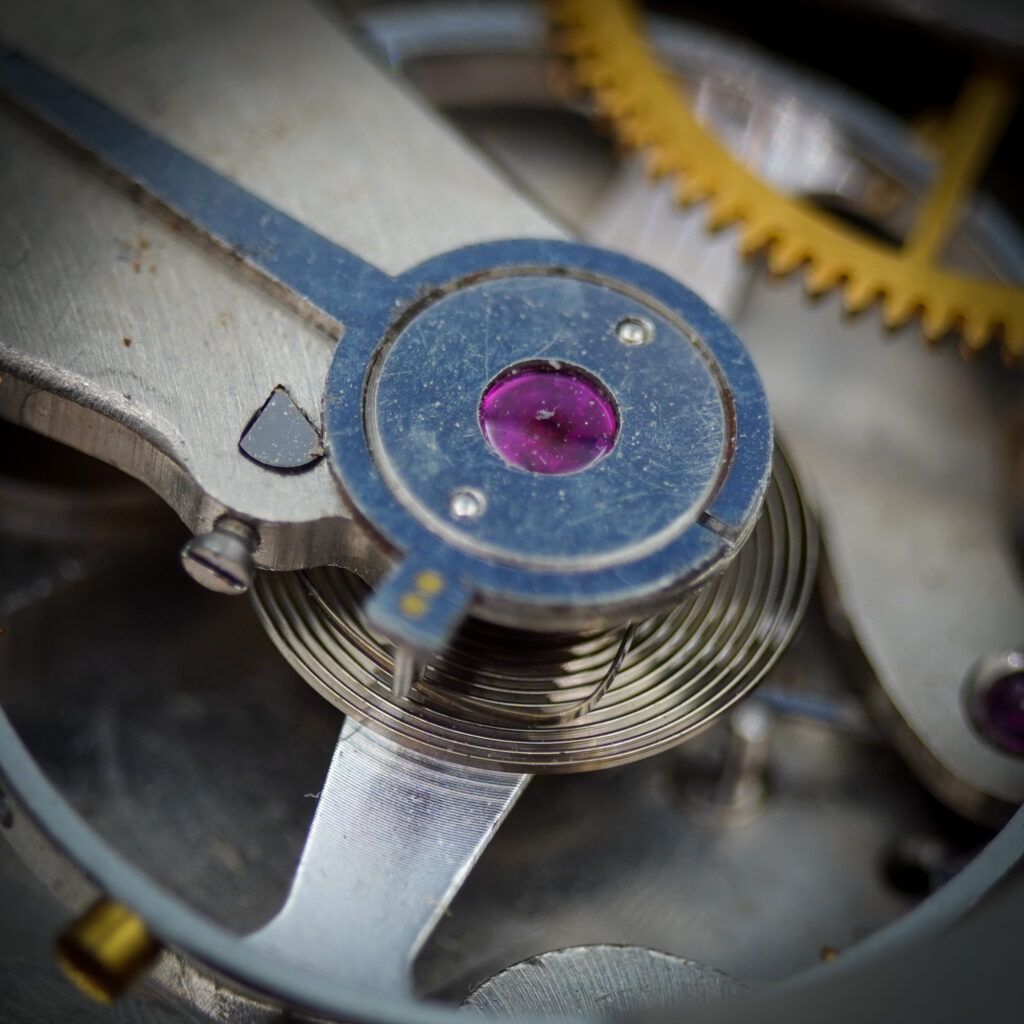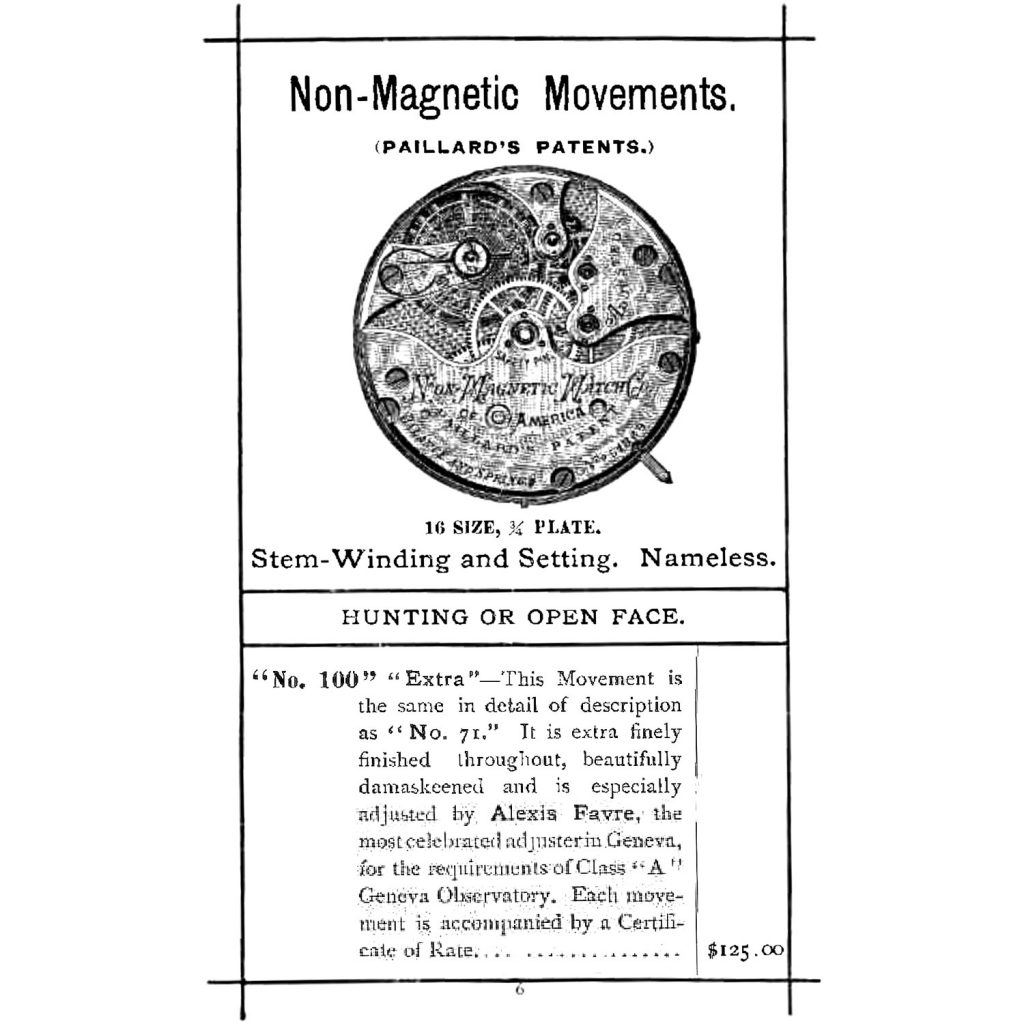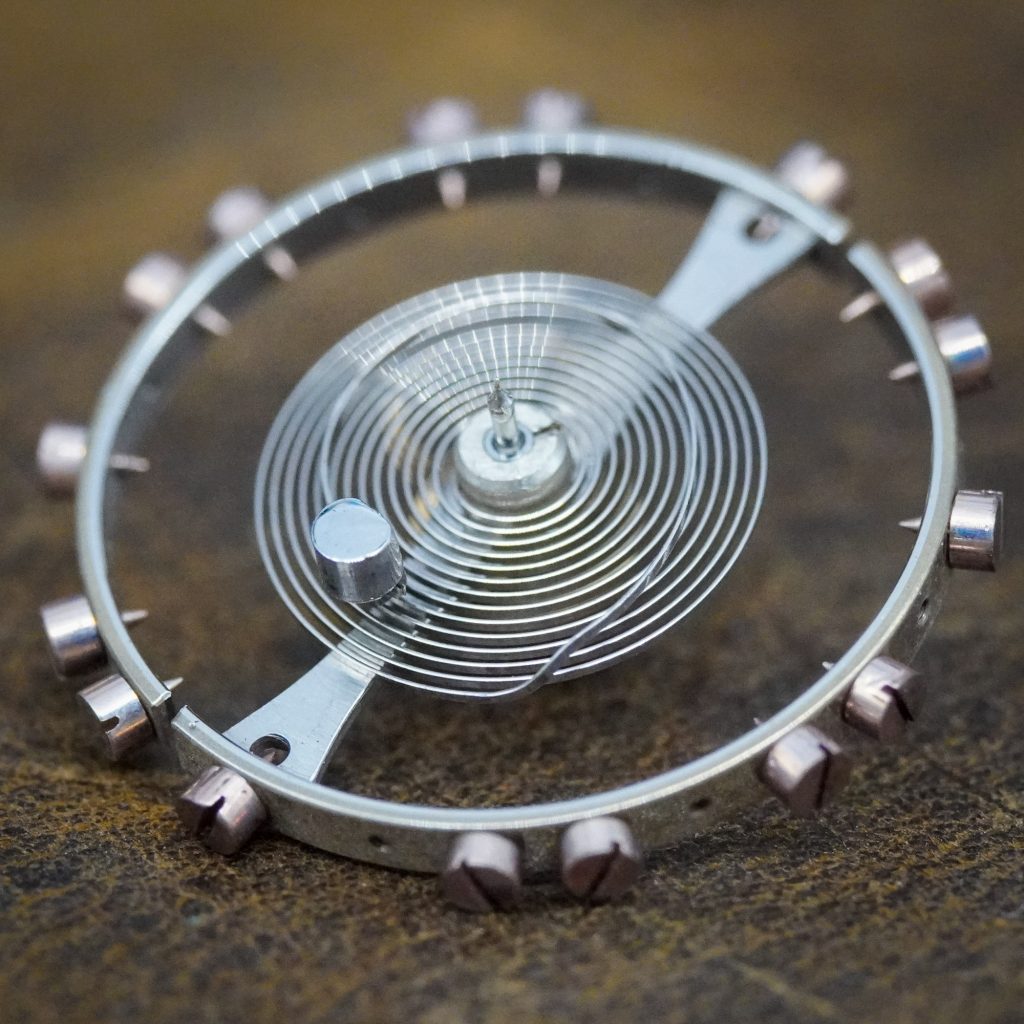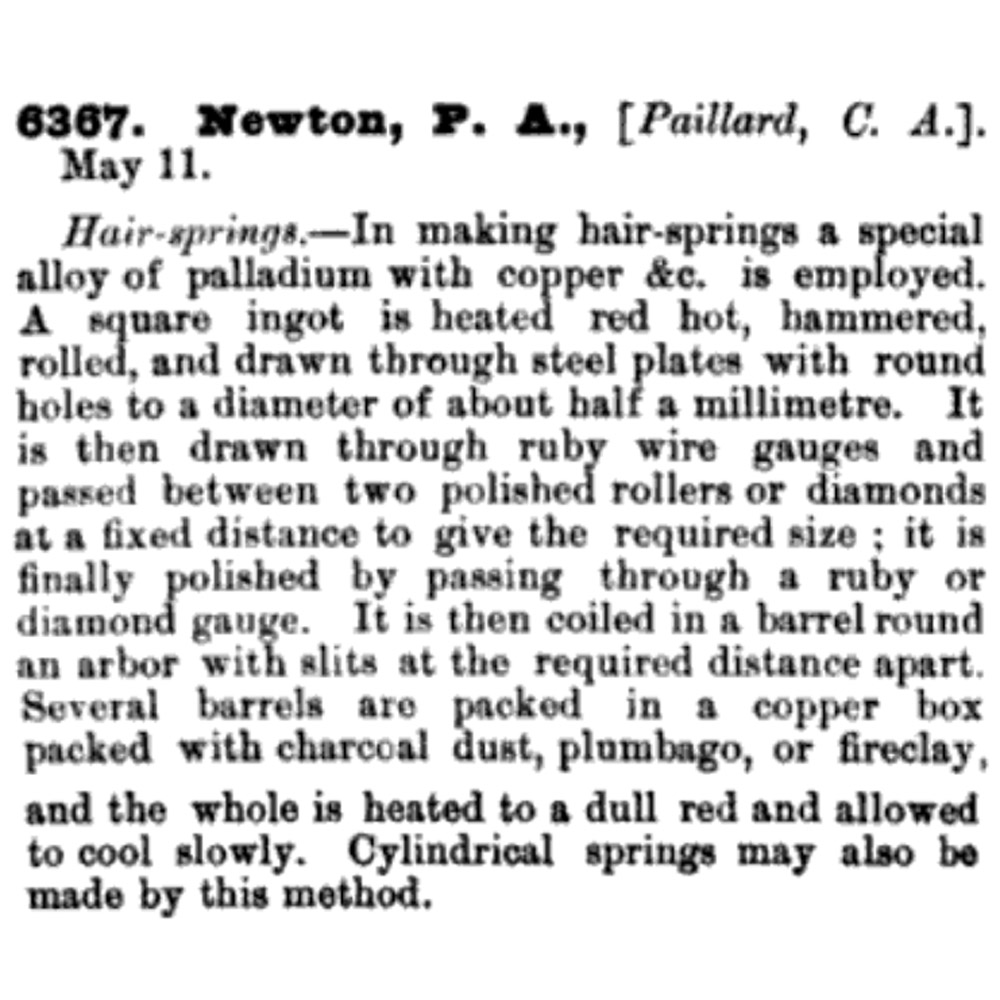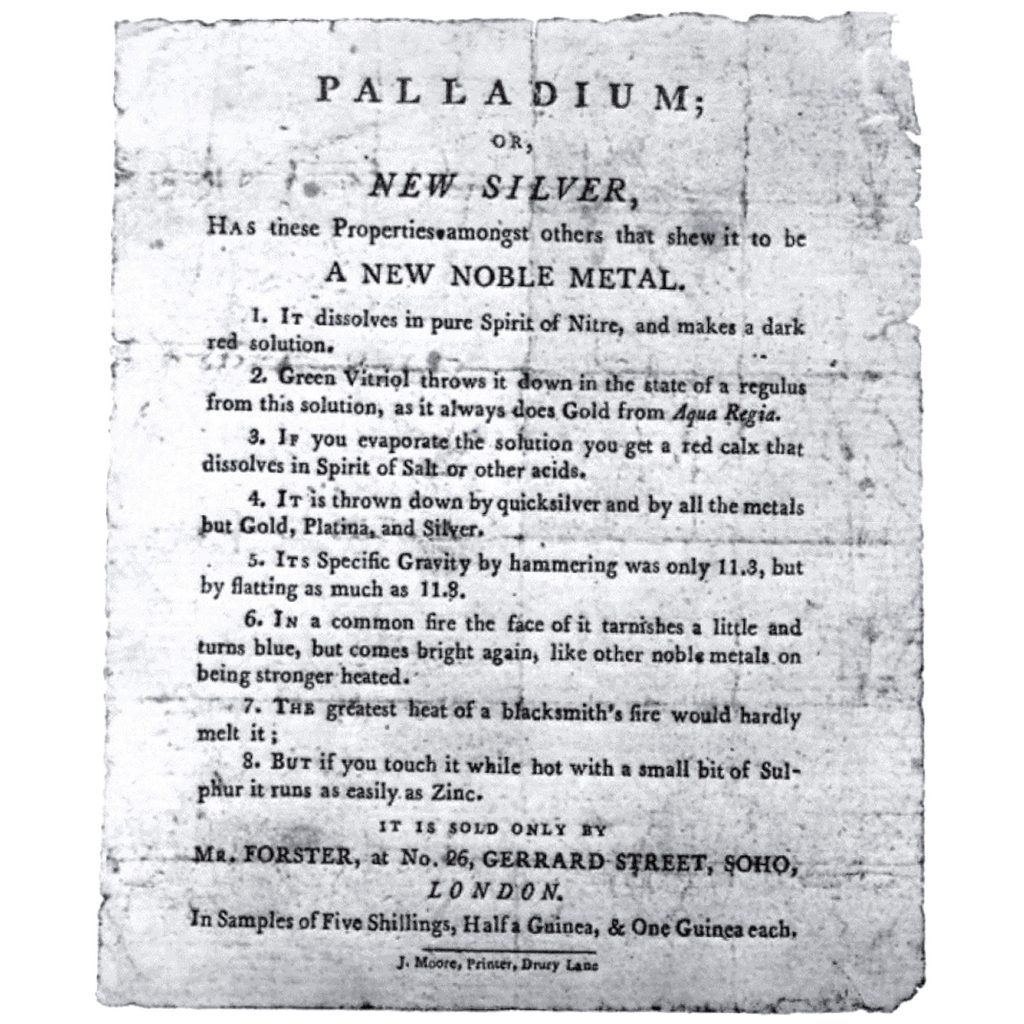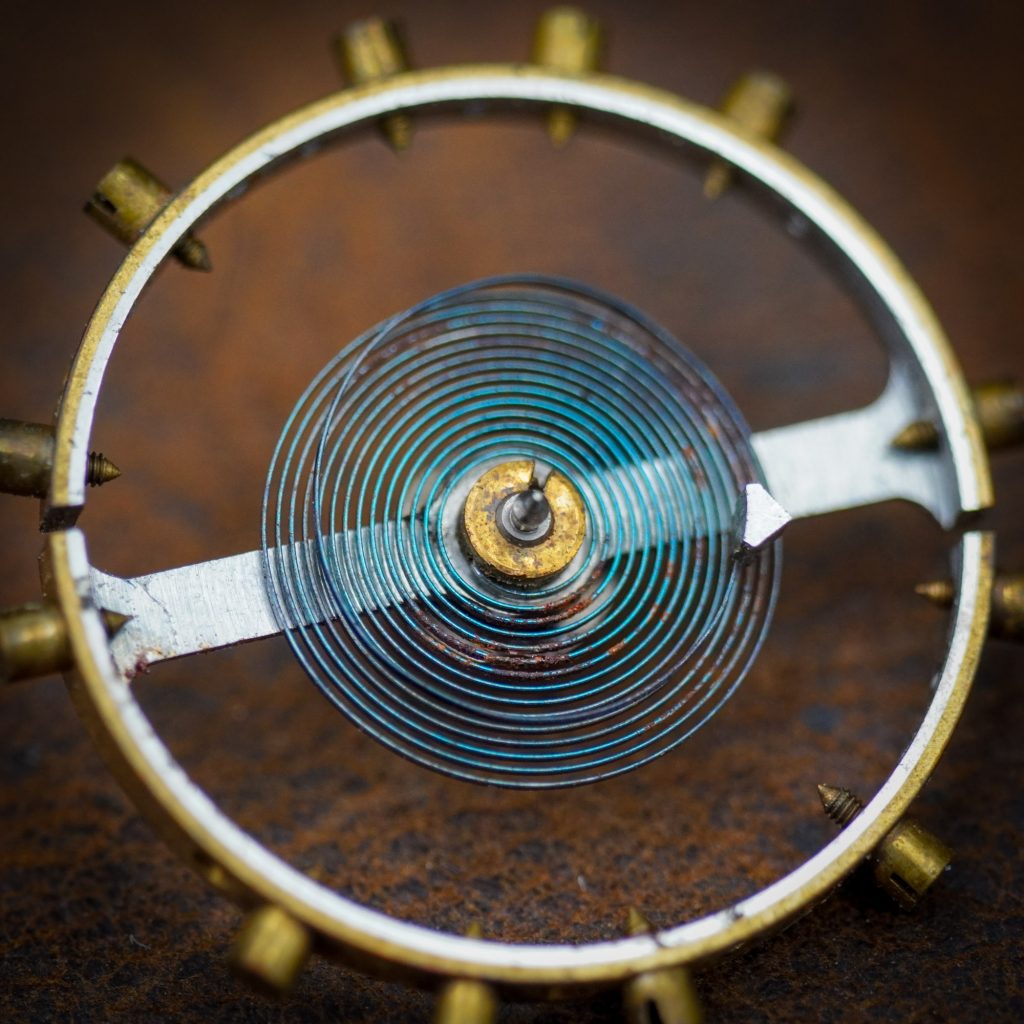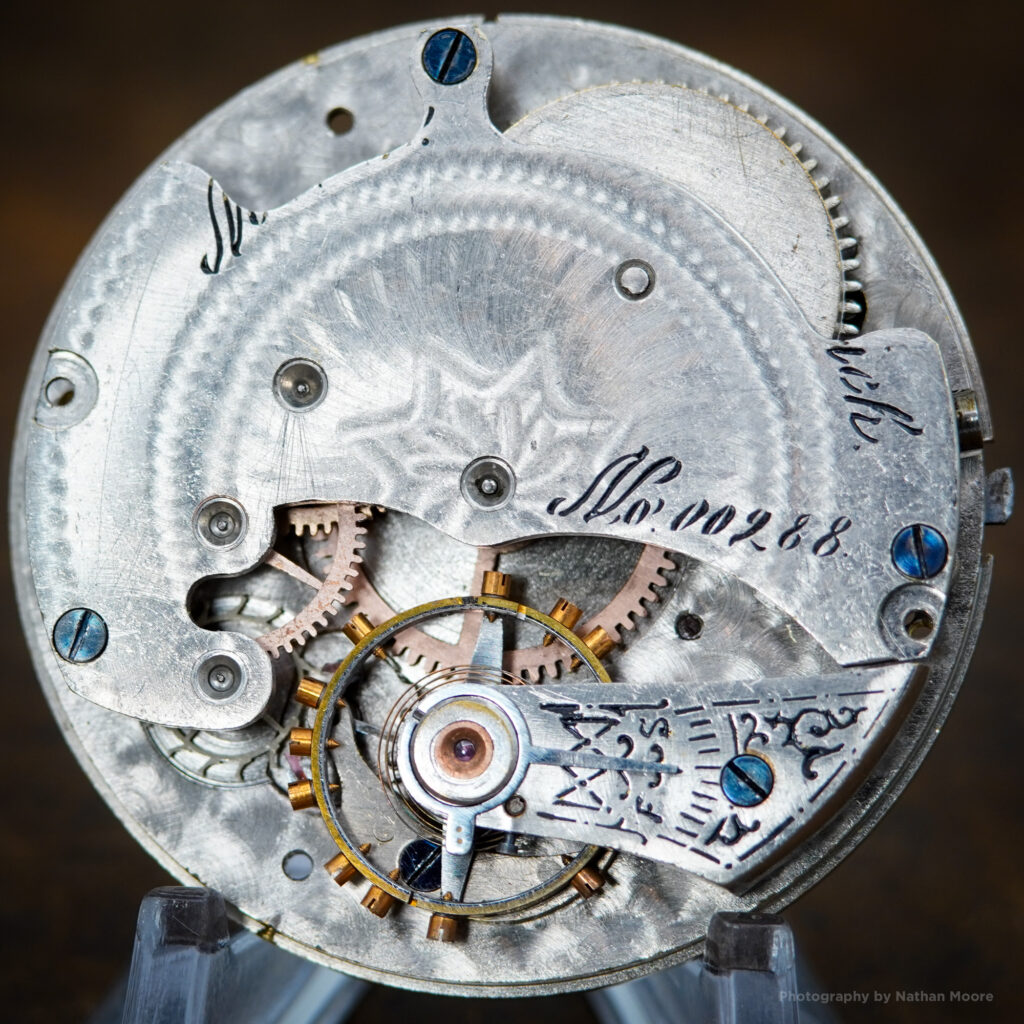
Hairspring

Elginium Hairspring Fitted on an Elgin Watch The Elgin National Watch Company introduced the Elginium hairspring in 1938. During this era, American watch companies were urgently competing to develop new.
Pictured: Non-Magnetic Watch Company Grade No. 100 Extra, Especially Adjusted by Alexis Favre, 1888 Catalog Page Reproduced in the June 1989 Issue of the NAWCC Bulletin, “Non-Magnetic Watch Co. of.
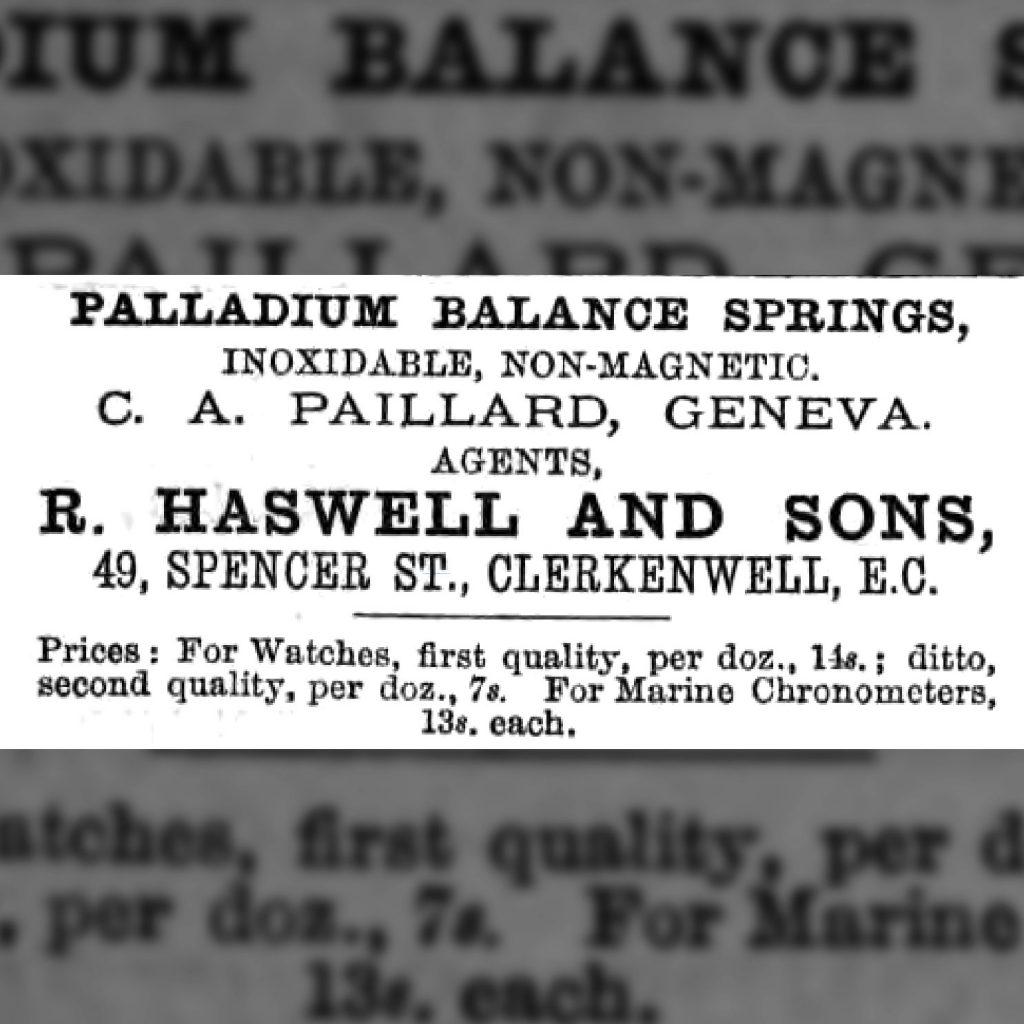
Pictured: Paillard’s Palladium Balance and Hairspring Charles-Auguste Paillard originally developed his palladium alloys to provide a more suitable material for the construction of fine marine chronometers. As a result of.
Pictured: C.A. Paillard’s Palladium Hairspring English Patent #6367. In the late 1870s, after a decade of experimentation, Charles-Auguste Paillard successfully developed a palladium alloy that was immune to corrosion, featured.
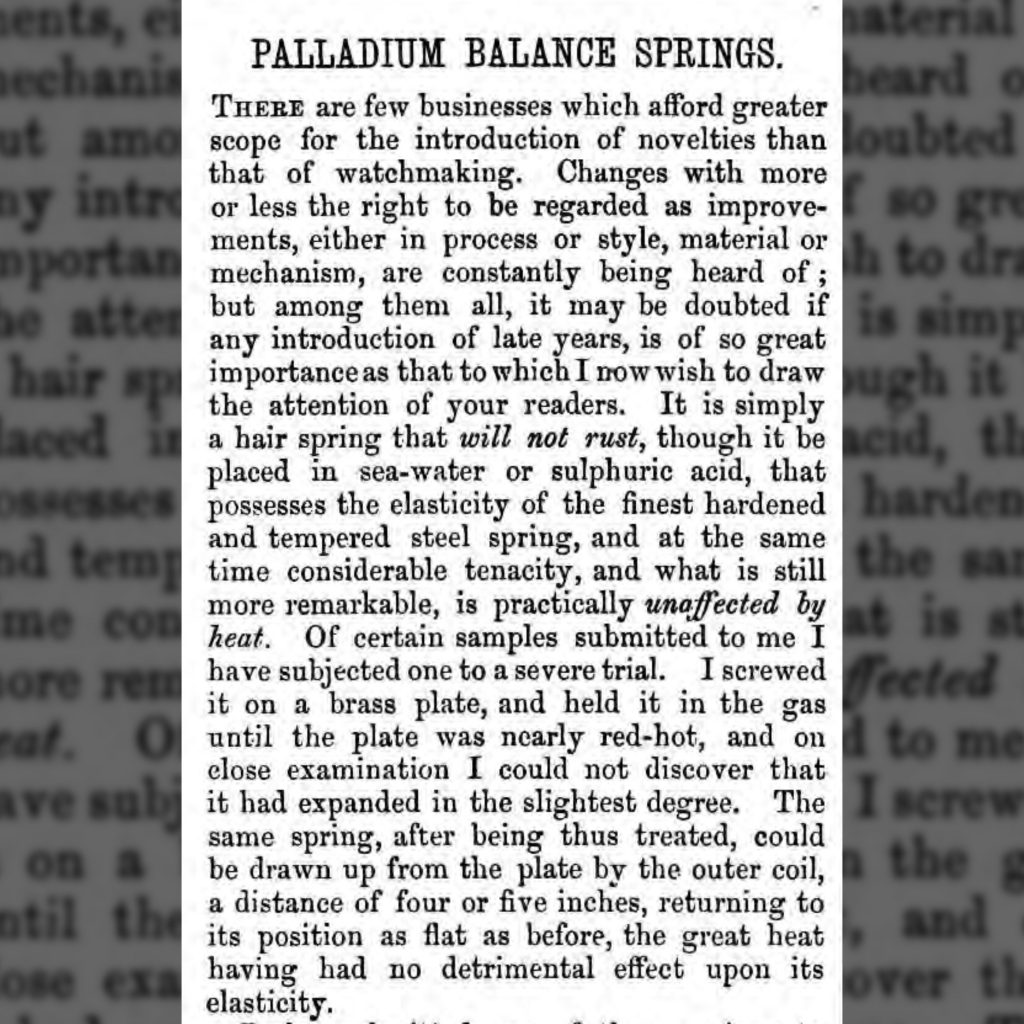
Pictured: “Palladium” Handbill, Published in the August 1803 issue of Nicholson's Journal In 1803, chemist William Hyde Wollaston discovered palladium while experimenting with purification methods for platinum. Wollaston originally called.
Pictured: Rust on a Steel Hairspring At age seventeen, Charles-Auguste Paillard began an apprenticeship under his uncle to study the repair, service, and adjustment of marine chronometers. Paillard quickly realized.

